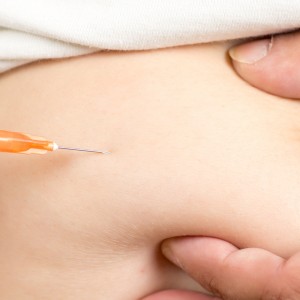SSc Patients May Improve with Grafts of Their Own Fat

 Italian scientists may have identified a way to improve systemic sclerosis (SSc) symptoms with fat grafts. A recent study titled “Autologous Fat Grafting in the Treatment of Fibrotic Perioral Changes in Patients with Systemic Sclerosis” published in the journal Cell Transplantation showed that the fat grafts improved mouth movement, improved blood vessel regrowth, and helped to restore the skin.
Italian scientists may have identified a way to improve systemic sclerosis (SSc) symptoms with fat grafts. A recent study titled “Autologous Fat Grafting in the Treatment of Fibrotic Perioral Changes in Patients with Systemic Sclerosis” published in the journal Cell Transplantation showed that the fat grafts improved mouth movement, improved blood vessel regrowth, and helped to restore the skin.
SSc is a connective tissue disease that affects many different parts of the body, including the skin. It is characterized by diseased blood vessels (vasculopathy) and fibrosis — the thickening and scarring of connective tissue.
Autologous fat tissue grafting (AFTG) refers to using the patient’s own fat for transplantation. Researchers and clinicians have successfully used AFTG for different SSc conditions, including localized scleroderma. Localized scleroderma refers to thickened skin, often also affecting the bones and muscles beneath the skin. It most frequently develops in the arms, legs, or forehead. The impact of scleroderma can vary from very mild to life threatening, depending on where the body is affected and how severe the symptoms are.
The researchers, led by Nicoletta Del Papa of Day Hospital Reumatologia, Ospedale G. Pini, Milano, Italy, studied 20 women with the diffuse type of SSc. This is the most severe form of the disease. The study participants had an average age of 35 and had SSc for about ten years. Fat from the stomach area was injected into the region around the mouth. One goal of the study was to improve mouth movement. Three months after the treatment, mouth movement improved. The scientists also measured substantial new blood vessel growth in the skin around the injections compared to before the treatment and the treatment reduced some of the skin hardening caused by the SSc.
[adrotate group=”4″]
In their report, the authors noted that “The present study suggests that, in patients with SSc, AFTG can improve mouth opening and function, induce a neovascularization, and partially restore the skin structure.”
The investigators concluded, “Our study suggest that [fat grafts] can provide immediate and long-lasting benefits in terms of both aesthetic and functional improvement. It is a safe, relatively non-invasive, and rapid procedure … The cellular and/or tissue mechanisms underlying these changes need further investigation.”
Studies in more SSc patients are needed and the mechanisms that fat uses to restore tissue health also require more understanding. It would also be of interest to understand whether multiple fat transplantations could be beneficial or if other symptoms of SSc can be alleviated. AFTG may provide some relief for this hard-to-treat condition.






